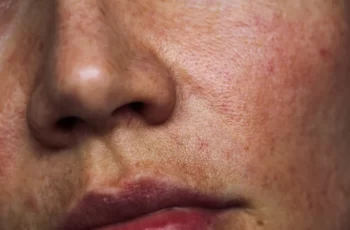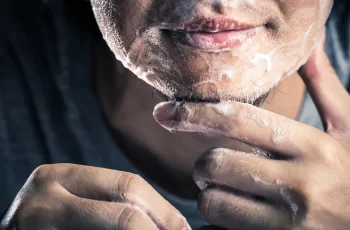
Over-Exfoliated Skin: What to Do When You Scrub Too Much
In the pursuit of smoother, brighter, and clearer skin, many people fall into a common skincare trap: over-exfoliation. While exfoliating can be an essential part of any skincare routine, helping to remove dead skin cells, unclog pores, and boost product absorption, doing it too often—or too aggressively—can do more harm than good.
If you’ve noticed your skin feels irritated, tight, or inflamed after using scrubs, acids, or brushes, chances are you’ve over-exfoliated. The signs might include stinging, burning, excessive redness, dry patches, or even scabbing. This guide will help you understand the signs of over-exfoliation, how to treat it, and how to prevent it in the future with the right skincare strategy based on your specific skin type.
What Is Over-Exfoliation?
Over-exfoliation occurs when the top layer of your skin—known as the stratum corneum—is thinned or compromised due to excessive mechanical or chemical exfoliation. Normally, your skin naturally sheds dead cells through a process called desquamation, which keeps the surface fresh and smooth. However, adding too many exfoliating agents—especially when layering actives like retinoids, vitamin C, AHAs (alpha hydroxy acids), BHAs (beta hydroxy acids), or using harsh scrubs—can accelerate this shedding unnaturally, damaging your skin’s protective barrier.
It’s easy to accidentally overdo it, especially when using multiple products that contain exfoliating ingredients—some of which may not even be labeled as exfoliants. For example, Vitamin C is often viewed solely as a brightening antioxidant, but it can also contribute to exfoliation, particularly when combined with other active ingredients.
Common Causes of Over-Exfoliated Skin
Using multiple exfoliants at once – Many cleansers, toners, and serums now contain mild exfoliants like glycolic acid, salicylic acid, or enzymes. Using several of these in one routine, even unknowingly, can be too much for your skin.
Aggressive mechanical exfoliation – Using facial brushes, rough washcloths, or gritty scrubs can cause microtears and damage the top layer of your skin, especially if used daily.
Combining exfoliants with retinoids or Vitamin C – Both of these ingredients can sensitize the skin. Adding exfoliants on top can overload your skin’s tolerance.
Exfoliating too frequently – Even gentle exfoliation done too often (e.g., every day or twice daily) can prevent your skin from properly regenerating.
Signs and Symptoms of Over-Exfoliation
Wondering if you’ve gone too far? Here are the most common signs that your skin is over-exfoliated:
Burning or stinging sensations
Persistent redness or blotchiness
Increased sensitivity or pain to the touch
Flaking or peeling skin
Breakouts or purging (increased clogged pores)
Small red bumps or rash-like patches
Scabs or open sores
A shiny, tight appearance to the skin (especially on the cheeks or forehead)
Dehydration or dry patches
Itching or tenderness
These symptoms often emerge quickly—within hours or a couple of days after aggressive exfoliation.
Why Over-Exfoliating Is Harmful
Exfoliating is meant to support your skin’s natural renewal process, not replace it entirely. When you go beyond your skin’s limits, you can:
Damage the skin barrier – The stratum corneum helps lock in moisture and protect against bacteria and irritants. Over-exfoliating weakens this layer, making skin vulnerable to environmental stressors.
Trigger inflammation – Repeated exfoliation can lead to chronic inflammation, which not only hurts but can also age the skin faster.
Disrupt keratinization – Over-exfoliating interferes with your skin’s ability to regenerate and repair itself, disrupting normal cellular turnover.
Cause long-term sensitivity – Once the skin barrier is compromised, your skin may become more reactive to everyday products and ingredients.
Skin Types Most at Risk for Over-Exfoliation
Not everyone is equally prone to over-exfoliation. Your Baumann Skin Type® plays a major role in how your skin tolerates exfoliants. While exfoliation might benefit some oily and acne-prone skin types, most people—especially those with dry or sensitive skin—need to be cautious.
Sensitive Skin
People with sensitive skin, including those prone to rosacea, eczema, or stinging, are at high risk of reacting to exfoliants. Their skin barrier is often already compromised, so adding even mild acids or physical scrubs can trigger redness, burning, and flaking.
Dry Skin
Exfoliating dry skin too frequently strips away essential oils and lipids, worsening dehydration and irritation. Dry skin types especially need their outermost layer to hold onto water in cold, dry climates.
Acne-Prone or Reactive Skin
Some people mistakenly exfoliate aggressively to treat acne or purging, which only increases inflammation and worsens breakouts. Over-exfoliating can also enlarge pores and cause scabs.
Resistant Skin Types
While these skin types can handle more exfoliation, even they can overdo it with potent actives like AHAs, retinoids, and peels used too frequently.
How Many Exfoliants Should You Use?
To maintain skin health and avoid damage, it’s best to limit your routine to no more than two exfoliants at a time, and even then, not necessarily every day. For most people, exfoliating 2–3 times per week is enough. Resistant or oilier skin types may tolerate more frequent use, but always follow product instructions and listen to your skin.
How to Treat Over-Exfoliated Skin: A 10-Step Recovery Plan
If you’ve over-exfoliated, the first step is to stop exfoliating immediately. You need to give your skin time to repair itself. Here’s how to help it heal:
Discontinue all exfoliants – This includes acids (glycolic, lactic, salicylic), enzymes, retinoids, and vitamin C products.
Avoid mechanical exfoliants – No brushes, scrubs, washcloths, or facial cleansing devices.
Use a soothing, non-foaming cleanser – Choose a sulfate-free formula and wash with cool or lukewarm water.
Moisturize with a barrier-repair cream – Look for moisturizers rich in ceramides, fatty acids, and cholesterol to help rebuild the skin barrier (e.g., Zerafite Soothing and Calming Face Cream).
Apply a calming facial oil – Oils like argan oil or squalane can help soothe and seal moisture overnight.
Use soothing face masks – Hydrating, anti-inflammatory masks can be used daily until your skin feels calm again.
Avoid friction – Pat your skin dry—don’t rub. Minimize touching your face.
Protect from the elements – Use SPF 30 or higher if going outdoors, and shield your skin from wind or temperature extremes.
Hydrate from within – Drink plenty of water and avoid alcohol or caffeine, which can dehydrate the skin further.
Be patient – Don’t rush back to actives. Wait at least 1–2 weeks before reintroducing any exfoliants.
Best Products for Healing Over-Exfoliated Skin
Here are types of products to look for:
Barrier-repair creams – Formulas with ceramides and cholesterol to rebuild your skin’s protective layer.
Anti-inflammatory oils – Oils like argan, oat kernel, and jojoba are excellent for calming red, irritated skin.
Hydrating masks – Aloe vera, allantoin, and panthenol help speed up healing and reduce sensitivity.
How Long Does Over-Exfoliated Skin Take to Heal?
The recovery time for over-exfoliated skin depends on the severity of the damage and your individual skin type:
Mild irritation: 1–3 days
Redness, sensitivity, or shiny skin: 2–5 days
Scabs or open sores: Up to 7 days
Bumps or purging: 5–10 days
During this time, it’s critical to avoid active ingredients and focus entirely on hydration, barrier repair, and soothing.
Preventing Over-Exfoliation in the Future
To avoid this situation in the future, follow these best practices:
Know your skin type – Take the Baumann Skin Type® Quiz to get a personalized skincare routine and learn how often you should exfoliate.
Introduce actives slowly – When trying new exfoliants or retinoids, start 1–2 times per week and increase gradually.
Don’t layer too many actives – Avoid combining multiple exfoliants unless directed by a dermatologist.
Pay attention to how your skin feels – Tightness, stinging, or redness are signs to take a break.
Adjust for the season – Exfoliate less in winter, when the skin is already more


